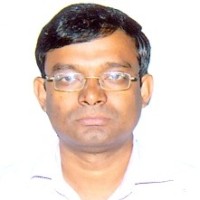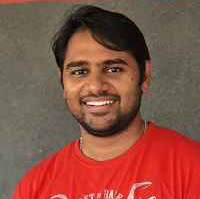Broad Areas of Interest
After conducting some theory classes on cellular automata, students will be assigned projects in group. The projects will be given from four major areas - reversibility, conververgence, modelling and technology.
Reversibility:
Reversibility refers to a characteristic of a system that allows the system, for each transition from an initial configuration to a final configuration, to come back to the initial configuration. Many physical systems,
including microscopic systems, are reversible. In mathematics, if a function is bijective, then we can get its inverse. So, for a system, if we can see the transition from one configuration to another as a function, then we can say that
the system is reversible if and only if the transition function is bijective. A cellular automaton can also be seen in terms of (global) transition function. Now it is interesting and challenging to decide if a given cellular automaton
is reversible or not. It is particularly interesting from a modelling point of view, if we want to model a reversible system by a cellular automaton, and an application point of view, if the application demands loss of information during
execution.
Convergence:
Convergence is an opposite phenomenon of reversibility, where a system cannot come back to its initial configuration after moving out of the configuration. Rather the system, in course of its evolution, settles down
to a configuration (convergence point) or to a small set of configurations. A range of physical systems show this convergence phenomenon. Like reversibility, it is challenging and interesting to decide if a given cellular automaton converges
to a fixed point from any initial configuration. The cellular automata that show convergence behavior have a range of applications in many fields, including Machine Learning.
Modelling:
Cellular automata have been historically used as a method for modelling biological and physical systems, and utilized to theoretically study such systems. Now-a-days, cellular automata based simulations are widely used
in a great variety of domains, from statistical physics to social science. Following are some examples where cellular automata have been used for modelling.
- Complex Rioting phenomenon
- Traffic Modelling
- COVID 19 propagation phenomenon
- Modelling of Distributed System problems
- Modelling of Artificial Life dynamics
The students can also revisit the modelling capability of cellular automata for the above problems. In fact, any phenomenon related to various disciplines such as Physics, Chemistry, Computer Science, Civil Engineering, Material Science and Engineering,
Mining Engineering, Mechanical Engineering, Social Science, etc. can be modelled by cellular automata. For example, following modelling problems can be considered.
- Modelling Migration Phenomenon
- Mapping crystal structure onto Cellular Automata
- Modelling of various aspects of Thermodynamics
Technology:
Technology refers to the collection of techniques, methods or processes used to provide some services or solutions to problems, or in the accomplishment of an objective, such as scientific invigilation. Since the
late 1980s, cellular automata have been used as solutions to many real-life technological problems. In the light of recent developments in the theory of cellular automata, this area of projects attempts to explore the new generation technological
possibilities of cellular automata. In particular, technological problems under the following domains are to be considered here.
- Pattern classification and recognition
- Clustering
- Machine Learning
- Image processing
- Pseudo Random Number Generation
- Cryptography
- Hardware design





